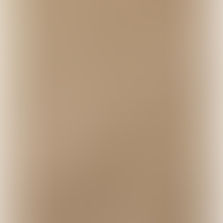What is the difference between a jersey and an interlock?

What is the difference between a jersey and an interlock? Or a rib knit and a jersey? The “what is the difference” question gets asked a lot here at TFF so let’s breakdown the differences between the three types of knits that this question applies most to.
Rib Knit
Rib knit is a knit fabric that stretches approx. 35%-75% across the grain depending on the fabric and has visible “ribs” on both sides of the fabric. It can be various contents including 100% cotton or a cotton/lycra blends. Solid colored rib knit is used for neckbands, sleeve bands, cuffs, etc. Printed rib knits can be used for all types of apparel including t-shirts, jammies, shorts, etc.
Jersey Knit
100% cotton jersey knit fabric stretches approx. 20%-25% across the grain and has a ribs on the “right” side of the fabric. On the wrong side, it has a different weave. For someone who is a knitter, the term purl is the type of switch or weave we see on the wrong side of jersey knit. Printed or solid jersey knit is great for t-shirts, dresses and skirts but is not recommended for neckbands or cuffs.
Cotton/Lycra jersey knit fabric stretches between 35%-75% across the grain depending on content. It has the same look as 100% cotton jersey but has excellent recovery for projects that need the fabric to “bounce” back into shape so to speak. Cotton/lycra jersey is a staple for making leggings, activewear, dancewear, and leotards but also perfectly suitable for t-shirts and dresses.
Interlock
Interlock is like a rib knit with ribs on both sides but then has additional threads running against the grain to give it more stability and this actually makes it easier to sew. Interlock has an approx, 25%-35% stretch across the grain and can be used for all types of apparel projects including t-shirts, shorts, jammies, infant sacks and layette.
Some of our other favorites here at TFF include swimsuit fabric, velour and fleece. Here is a bit of info about those fabrics!
Swimsuit
Swimsuit fabric can be 2-way or 4-way stretch and stretches approx. 75%. Swimsuit fabrics can vary in content but here at TFF, we try to always carry a Nylon/Lycra blend. Not only can you use “swimsuit” fabric for bathing suits, but for rash guards, activewear, yoga, dancewear, and leotards.
Velour
Velour has a soft, brushed almost plush right side and knit wrong side. It can be cotton/poly blends to bamboo/organic cotton/poly blends. This fabric has density and warmth and is used in making handmade diapers, loungewear, dacewear, or even upholstery projects. We carry both cotton/poly blend velour and bamboo/organic cotton/poly blend velour and the poly in both is used in the backing of the fabric purely for stability.
Fleece, Cotton Fleece ,Poly/Cotton Fleece
Fleece has a very soft, brushed right side and a knit wrong side. Fleece is perfect for handmade diapers and used primarily as an “inner” or soaker fabric. Fleece can vary in content and weight and also makes for a warm jacket lining. There is cotton fleece or poly/cotton fleece.
Polar Fleece
The majority of the sewing patterns on Fleece Fun are designed to work with polar fleece*. Polar fleece is also good for jacket or blankets. Polar Fleece can be divided in to two categories, anti-pill and non anti-pill. Anti-pill tends to be a more high quality fabric, and doesn’t “ball up” or “pill” after several washes. Non anti-pill is cheaper, but will get little pills after wearing and washing. I personally recommend spending a little bit more money for the anti-pill as it will look nicer longer. Polar fleece can come in different weights, a medium weight tends to be the most common one that you will find in your local fabric store. You can find out more facts about fleece here.
Sewing on fleece can be easy because it doesn’t slip under the needle or fray. However the more stretch the fleece has, you will want to sew with a ballpoint needle. Stretch can vary greatly between brands and grades. Typically the cheaper the fleece, the lest stretch it has (and you can get away with sewing with a standard needle). If you experience trouble with sewing your fleece, try changing needles and lengthening your stitch and/ or using a zig zag stitch instead of a running stitch.
*Please note that the term “polar fleece” is a copyrighted term that is often misused for medium weight fleece.
Micro Fleece
Softer than polar fleece, micro fleece is wonderful to touch and is mostly geared for baby and children projects. There is a very clear right and wrong side to most micro-fleece. One side has the heavenly feel with its tiny (almost furry) fibers. It is thinner than the medium weight fleece. And while it doesn’t fray the ends don’t fray they can be stretched out of shape, so it recommended not to leave exposed edges raw.
Minky
While debatable if this is truly a fleece fabric it is often clumped in with the fleece group. Named Minky for its simulated feel of mink, this fabric is truly heavenly. However it does require special care. Sewing on Minky can be difficult as it will slide under the needle. This means lots of pins, a jersey ball point needle or a walking foot to sew on this fabric. The edges can ruffle and lose shape so finishing is recommended (with exception of some projects – check out the candy stripe scrunch scarf here). You should also never wash Minky in warm water or dry it on a high heat as it will lose its signature softness. You can buy double sided Minky (but is expensive) but most often it is a single sided fabric. Minky is most often used in baby projects, but I love the feel of this fabric so much that I designed a couple of patterns using it for and adult! .
Correct Pattern Pages Center in Content
Coral Fleece
Coral fleece is more closely related to Minky or cuddle fleece. It had a more fur like texture. Because of it’s construction and texture it’s not recommended for no sew projects as it will shed and stretch more that polar fleece. the edges need to be finished so it won’t get stretched out in the washer. If you wash it cold, do not use fabric softener and dry it low, it will help to maintain it’s soft fury texture. Hope that answers your questions!
So there’s a quick guide to fleece please comment or write me if you have a question!
Are you ready to start sewing with fleece? Here are some great free patterns and tutorials to get you started (a lot of them have a video to go with it too!).
Stretch Fleece
It is polar fleece with spandex. Used in garment That need flexibility for move comfortably.
Cotton



















